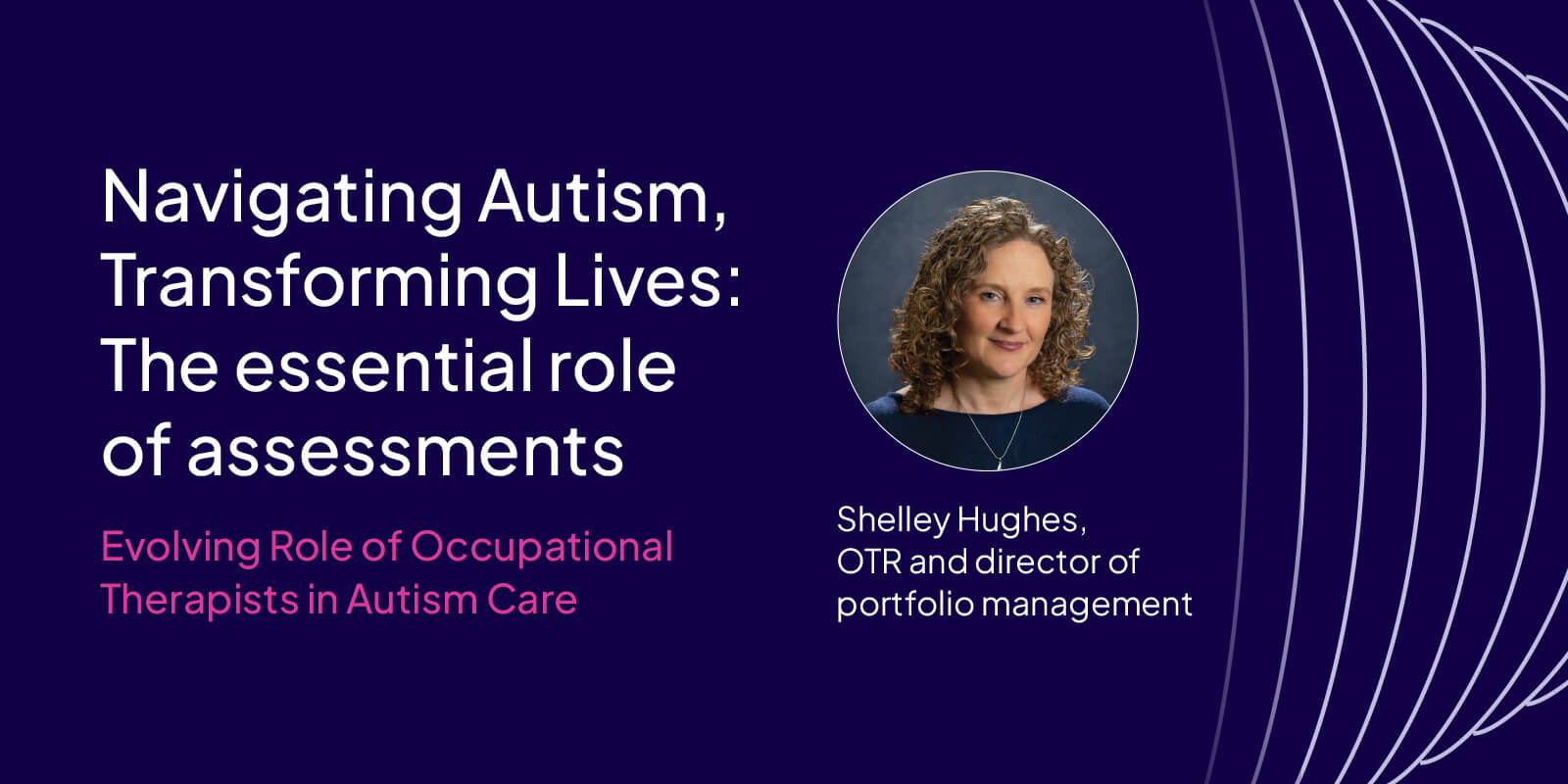Evolving Role of Occupational Therapists in Autism Care
by Shelley Hughes, OTR and Director of Portfolio Management and Delivery, Pearson Clinical Assessment

For autistic adults and children, a comprehensive approach to patient care can enhance individual strengths, provide tools to overcome challenges, and improve long-term outcomes. As the prevalence of autism has increased, so has the recognition of the value of occupational therapists (OTs). In an engaging conversation on the “Navigating Autism, Transforming Lives” podcast, guest Shelley Hughes, an occupational therapist and director of portfolio management for Pearson Assessments, called OTs “integral members of the autism care team.”
Hughes shared her thoughts on how OTs have evolved their approaches and built a strong evidence base as the understanding of autism has developed. Their focus has shifted to emphasize an individual’s strengths, social participation, mental health, and more.
OTs can have the biggest impact on autism care when therapists collaborate closely with other members of the care team in environments that include home, school, work, and community.
Transitioning from a bottom-up approach that focused on particular skills, such as basic motor or sensory needs, to a top-down approach that emphasizes understanding individuals in the context of their whole environment is more likely to lead to better results. This shift has allowed OTs to emphasize things such as strengths, social participation, and mental health to optimize outcomes.
In the podcast episode, Hughes shared important insights:
- The role of assessments like Vineland Adaptive Behavior Scales Third Edition and Pediatric Evaluation of Disability Inventory Computer Adaptive Test (PEDI-CAT) in evaluating adults and children with autism.
- Using information from assessments to identify skills and strengths and how OTs can use that information to develop interventions and strategies using a strength-based approach.
- How strength-based assessments set meaningful goals and empower individuals and their families.
- How assessments like Sensory Profile-2 can be especially effective for helping OTs determine sensory needs and the need to personalize interventions based on that information.
OTs are essential members of autism care teams and complement other therapists. In fact, Hughes noted, “no intervention should be provided in isolation.”
Hughes championed the use of digital assessments, embraced videoconferencing when appropriate to reduce caregiver burden, and stressed the importance of taking a comprehensive, collaborative approach to autism interventions. Pearson continues to champion assessments and OT support to help autistic adults and children leverage their strengths to live their best lives.
Tune in to the first episode of “Navigating Autism, Transforming Lives” for a deeper look at the role of occupational therapists in autism care.
 Play
Play
